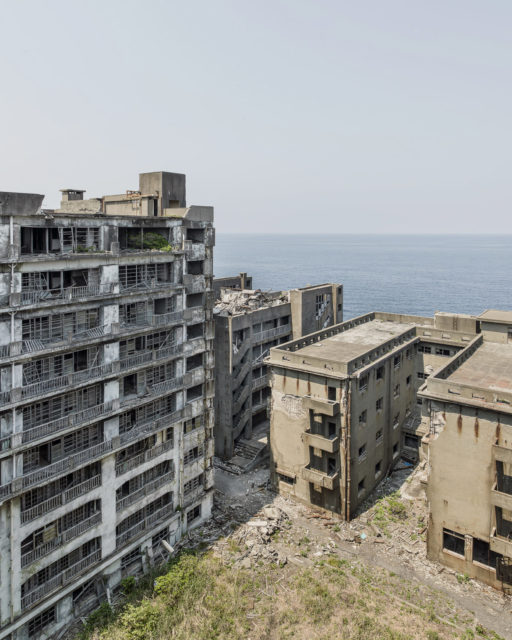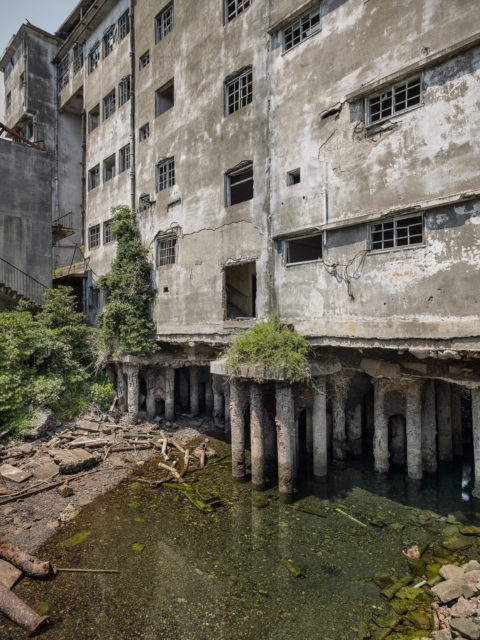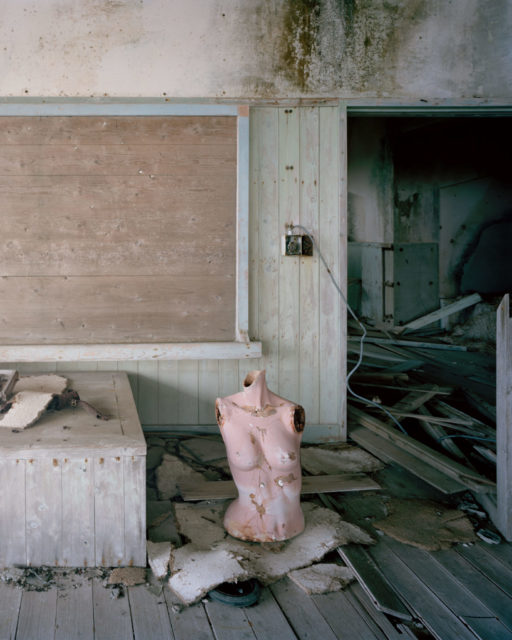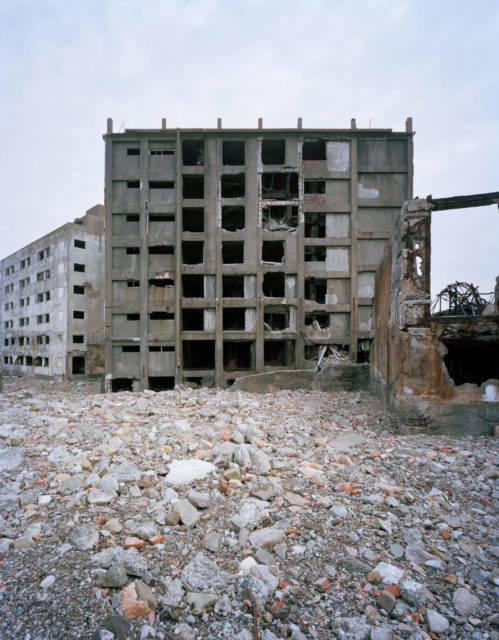Battleship Island: The ghostly Japanese island of Hashima was once the most populated place on the planet. Despite only measuring 480 meters (525 yards) long and 150 meters (164 yards) wide, with an area of 16 acres (6.3 hectares), this place was once home to over 5,200 people.
Now, it is one of the 505 uninhabited islands in the Nagasaki Prefecture in southwestern Japan.
Located at a distance of 15 kilometers (nine miles) from the city of Nagasaki, Hashima became home to a successful mining operation after coal was discovered in the seabed in 1810.
In the 1800s, a company known as Mitsubishi Goshi Kaisha (which would grow into the Mitsubishi we know today) was engaged in mining enterprises.
The company bought the island in 1890 and then began to mine coal from subsea mines. The island turned into a coal mining settlement where workers and their families were located.
With people moving to the island, there was a need to construct not only residential complexes but also various institutions to provide locals families with education, healthcare, and recreation. By the time all the necessary buildings had been constructed, the island began to look like a tightly packed labyrinth of concrete structures.

At first, the island bore the name of Gunkanjima, meaning Battleship Island, because the island itself, when viewed from the air, resembled the Japanese battleship Tosa. However, it also became known as “the island without green” because a large number of concrete buildings were erected on it.
The company drilled four main mineshafts up to one kilometer (0.6 miles) deep. Mitsubishi also fortified the island with a sea wall around the perimeter, which protected the island from bad weather coming in from the coast. Most of the structures on the island had to be made of concrete if they were to withstand the harsh environmental conditions of the area.

In 1916, a seven-story reinforced concrete building was built on Hashima Island. At the time, it was the tallest building in the country. Its construction likely came about because there was a growing number of workers on the island but given Hashima’s limited surface area, the only way to expand was upwards. The structure was designed to be typhoon-proof.
For several decades after that, the island was furnished with such entertainment places as a club, a cinema, a swimming pool, and shops. A school, kindergarten, hospital, town hall, and community center were also constructed.

During the two World Wars, Hashima Island became one of Japan’s economic engines. Prisoners of war were brought here and forced to work in very harsh conditions. During the war period, about 1,300 people perished on the island due to underground accidents and malnutrition.
In 1959, the island reached its peak population of more than 5,200 people. This figure made it the most populated island in the world. The residents worked and lived on the island exclusively. Anyone wanting to come and go from Hashima needed special permission from the guards monitoring the island.

In the 1960s, the Japanese coal industry began to decline as the oil industry became more financially viable. Coal mines gradually began to close throughout the country, and Hashima’s turn came in 1974. As well as financial concerns, the closure of the island mine was also prompted by the fact that coal reserves were severely depleted.
After Mitsubishi closed the mine in January 1974, residents began to leave the island and travel to mainland Japan in search of new jobs. Some of them packed up so quickly that they left personal items behind, which can still be seen today.

It took only two to three months for everyone to depart. Afterward, the island was officially closed to visitors as it was considered too dangerous to visit. As a result, the island has remained untouched and derelict for many years. Severe weather conditions, including typhoons, have led to further deterioration of the concrete structures.
In addition, the sea has eroded the coast and parts of the perimeter wall while the roots of trees break up the walkways in the town itself. Stairwells are choked up with debris and many of the buildings are in danger of collapsing.

Mitsubishi remained the owner of the island until 2002 when it voluntarily passed possession and management over to Takashima Town. When Takashima merged with Nagasaki, the latter city held jurisdiction over the island from 2005 to the present day.
Interest in the island as a tourist attraction arose in the early 2000s because of its ruins and history. In the summer of 2005, a single landing on the island was permitted for a group of journalists.

After that, thought was given as to how the island might be opened up for tourist trips. Plans were drawn up to create a pier and a path for tourists, which would lead around the island while avoiding unsafe areas.
Construction and safety issues delayed the opening somewhat, as there was a significant risk of buildings collapsing due to their age and instability. It was also necessary to rebuild parts of the outer wall.

Finally, Hashima was opened to tourists on April 22, 2009. Several tours are offered by previous residents of the island, giving tourists a real glimpse into what life was like when the island was populated.
Landings on the island occur fewer than 160 days of the year due to adverse weather conditions. In addition, about 95% of the island is inaccessible since opening it all up would require significant investment to ensure it was safe and would also risk detracting from the historical state of the buildings.

In 2009, Japan requested that Hashima and 22 other industrial sites be included in the UNESCO World Heritage List. Initially, the application was rejected due to objections by the South Korean authorities since Korean and Chinese workers had been used as forced labor on the island.
However, after discussions, South Korea agreed to approve the application if Japan recognized and detailed the forced labor of Koreans as part of the island’s history. Consequently, on July 5, 2015, Hashima was officially approved as a UNESCO World Heritage Site.

Unfortunately, a report by the World Heritage Committee in June 2018 indicated that Japan’s measures to document the forced labor conditions were “unsatisfactory” and the country needed to improve its efforts to live up to its promises.
As well as capturing the imagination of tourists, Hashima has caught the eye of movie and TV location scouts too. Aerial shots of the island were used in the James Bond movie Skyfall to represent the lair of the main antagonist. However, it was deemed too hazardous to film on the island itself, so studio sets were built to recreate the derelict atmosphere.

This amazing collection of photographs of Hashima is produced by a London-based photographer called Andrew Meredith. Andrew’s editorial and personal projects include architecture, interiors, and portraits.
Andrew’s personal project Hashima, documenting the former Japanese mining island, was exhibited at Photofusion in 2014, later transferring to the walls of the Ace Hotel in 2015. Currently, he is working on a project called Introversion which explores spatial nothingness.
His beautiful website contains all of his photography work. You should definitely check it out via this link. A huge thank you to him for sharing his photography experience on this fascinating island.
The Mine







The Hospital



School







Classrooms



Apartments








Passageways










Craco – Medieval Ghost Town in Italy

